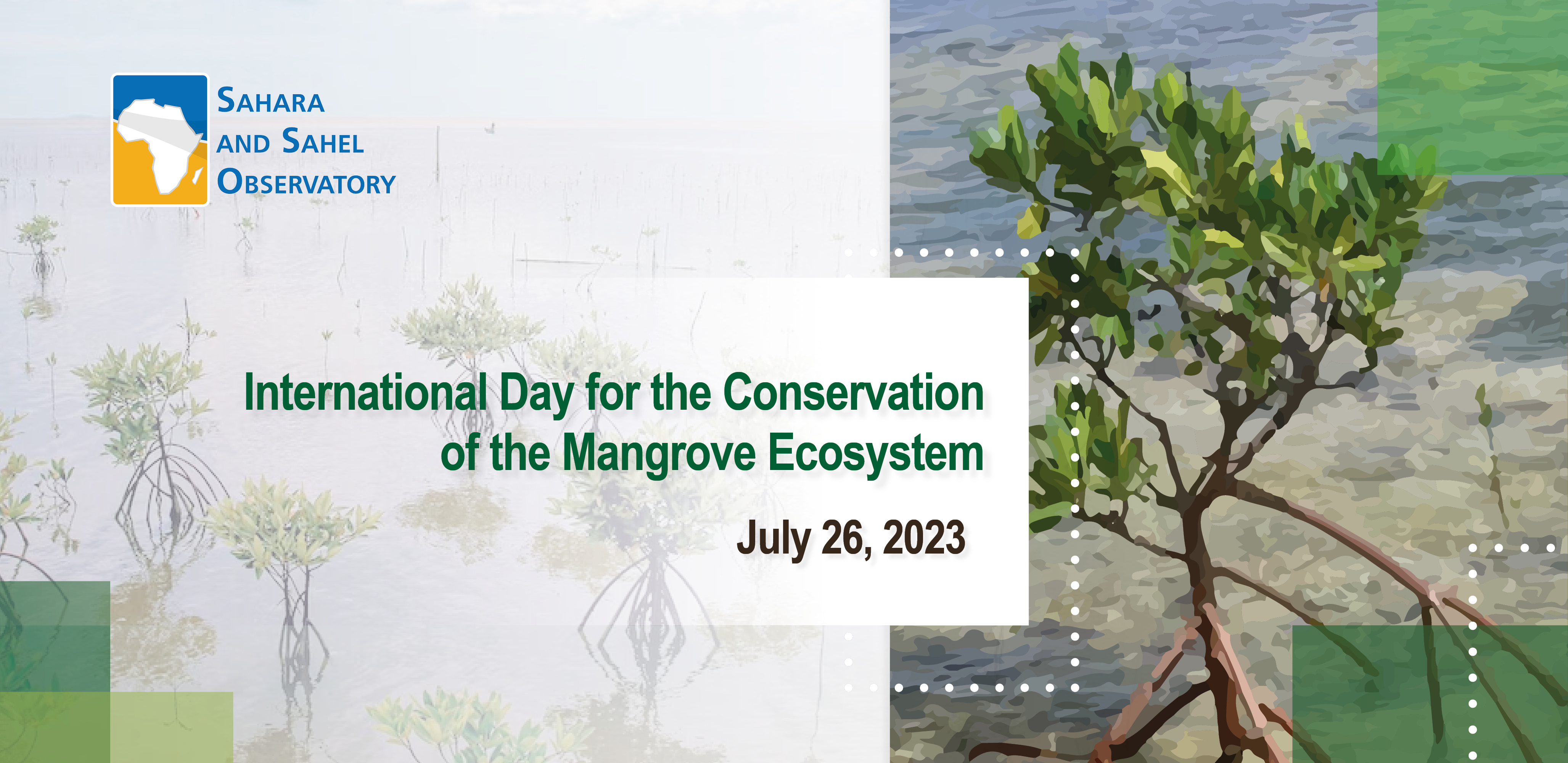The International Day for the Conservation of the Mangrove Ecosystem | 26 July 2023

Olfa SEHLI
Marine Biologist and Ecologist
Sahara and Sahel Observatory
“I’m mangrove, some people think that I’m just a forest with visible roots, when in fact I’m a life bond between land and sea; I’m about 70 species of unique salt tolerant trees and shrubs, found along tropical and sub-tropical coastlines, with a particularly heavy presence in Asia, followed by Africa and South America.
Today, and each 26th of July is the International Day for the Conservation of the Mangrove Ecosystem, adopted by the General Conference of UNESCO in 2015. A day, made to raise awareness about me being an important, unique, special and vulnerable ecosystem and to promote solutions for my sustainable management, conservation and uses.
You might wonder why the General Conference of UNESCO made a whole day for me? what makes me special to earn this honor?
My distinguished and unique branched roots, which sometimes grow above the ground, are the most important part of my structure. Those help me adapt to my environment and I use them as an anchor for stability and as a way to catch as much oxygen as I need. Some of my species even breathe oxygen like you, with aerial roots!
This unique feature is underlie many of the ecosystem services that I provide. They call me the “coastal guardians” because my root system works as natural shield against erosion by reducing the impact of waves and storms and keeping the land protected from any damaging ocean hazards.
I’m also called “the nurseries of the ocean” due to the high number of species who rely on the habitats provided by my roots to feed, grow and for refuge during their larval and early stages.
And guess what! you also rely on me! I heard that more than 210 million of you live close to me and benefit from the fisheries that I provide, thus contributing to your local economies and livelihood.
Last but not least I filter water by trapping sediments and absorbing excess nutriments. And most of all I’m a nature-based solution for climate change mitigation.
Speaking of Africa, I cover there more than 3.2million hectares of its coasts which is 19% of the world total. Mangroves in Africa are found mainly in the western Atlantic coast with Nigeria having the most extinctive mangrove forests in Africa.
In fact, I play an essential role in the coastal fisheries of west Africa, where this activity contributes with $400 million annually to the regional economy. Furthermore, livelihoods and communities rely on me for fuel wood for fish drying, timber and other building materials also products like snails, honey, oysters, crabs, and traditional medicines. According to a study conducted in the west African coast, active shellfisheries are being conducted in a large geographical coverage of my ecosystem with close to 571,000 household beneficiaries and over 50,000 harvesters, mainly women, being the primary resource users. They harvest over 300,000 MT of shellfish that brings a proximate value 336 million USD.
Despite all of this importance and all the ecosystem services that I provide, the same people that I support in their livelihood made me threatened while exploiting, without limits, the natural resources that I mentioned above, like urbanization, rising demands for land, fuel wood, and charcoal, all of this exasperated with the climate change.
I’m sorry to tell you that the loss of 30% of my ecosystem in Africa during the last 25 years, surly comes with a heavy price mainly on you, because I’m nature and nature is known to be rapidly resilient in contrary of you. For this reason, I advise you to not take mangroves for granted, use it rationally and work on their conservation before it’s too late”.
Given this background, through the project “Adaptation of agricultural production systems in Coastal Areas of Northwest Guinea-Bissau”, the GCF and the Sahara and Sahel Observatory aim to restore 250 hectares of mangrove swamp areas, to protect coastal communities, rehabilitate wetland ecosystems and improve the resilience of mangrove-rice system farmers.
Chuku, E. O., Effah, E., Adotey, J., Abrokwah, S., Adade, R., Okyere, I., ... & Crawford, B. (2022). Spotlighting women-led fisheries livelihoods toward sustainable coastal governance: The estuarine and mangrove ecosystem shellfisheries of West Africa. Frontiers in Marine Science, 9, 884715.
Hutchison, J; Spalding, M, and zu Ermgassen, P (2014) The Role of Mangroves in Fisheries Enhancement. The Nature Conservancy and Wetlands International. 54 pages
